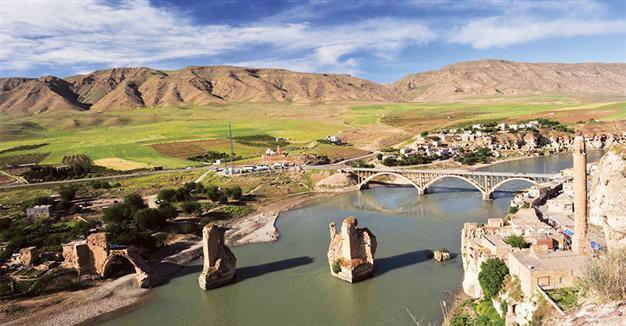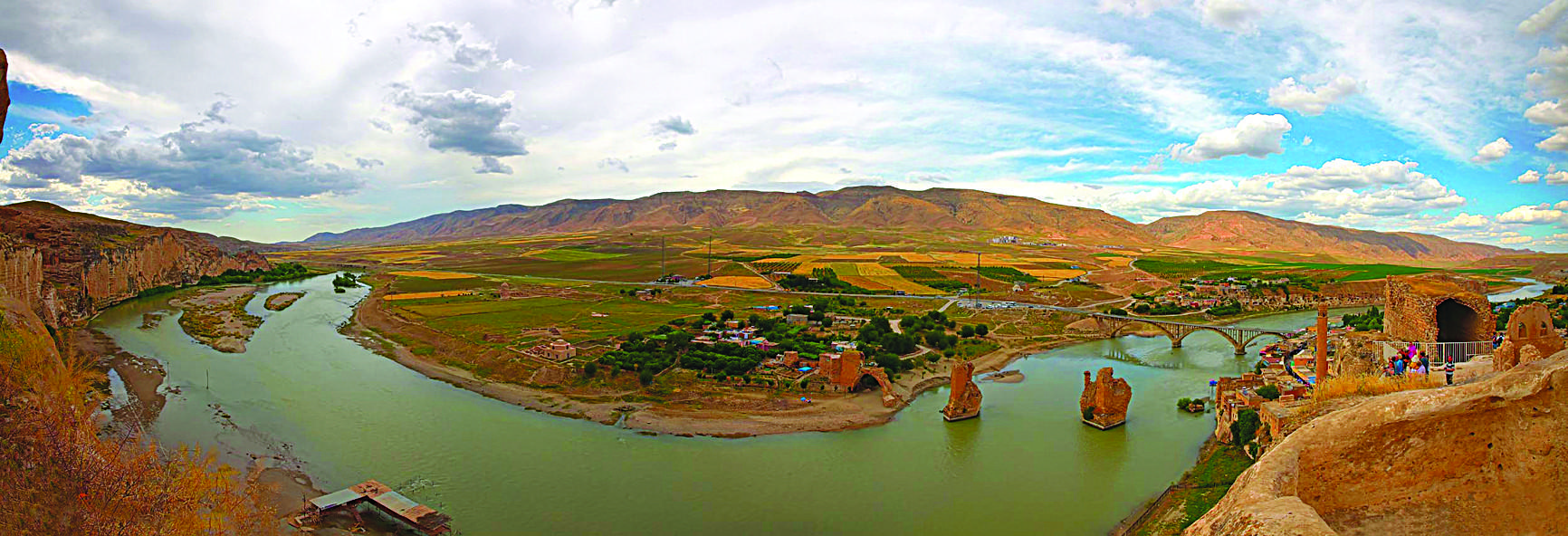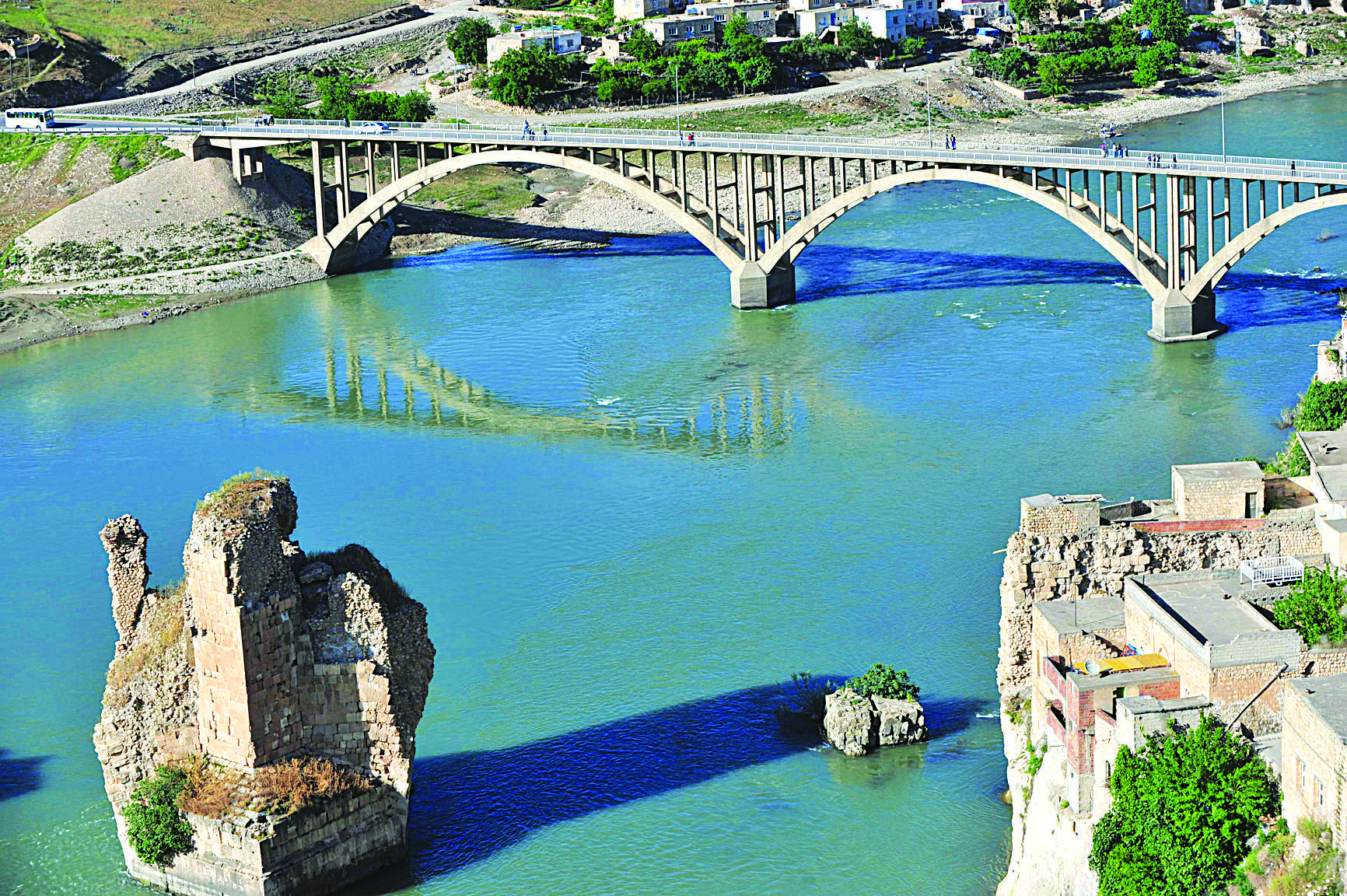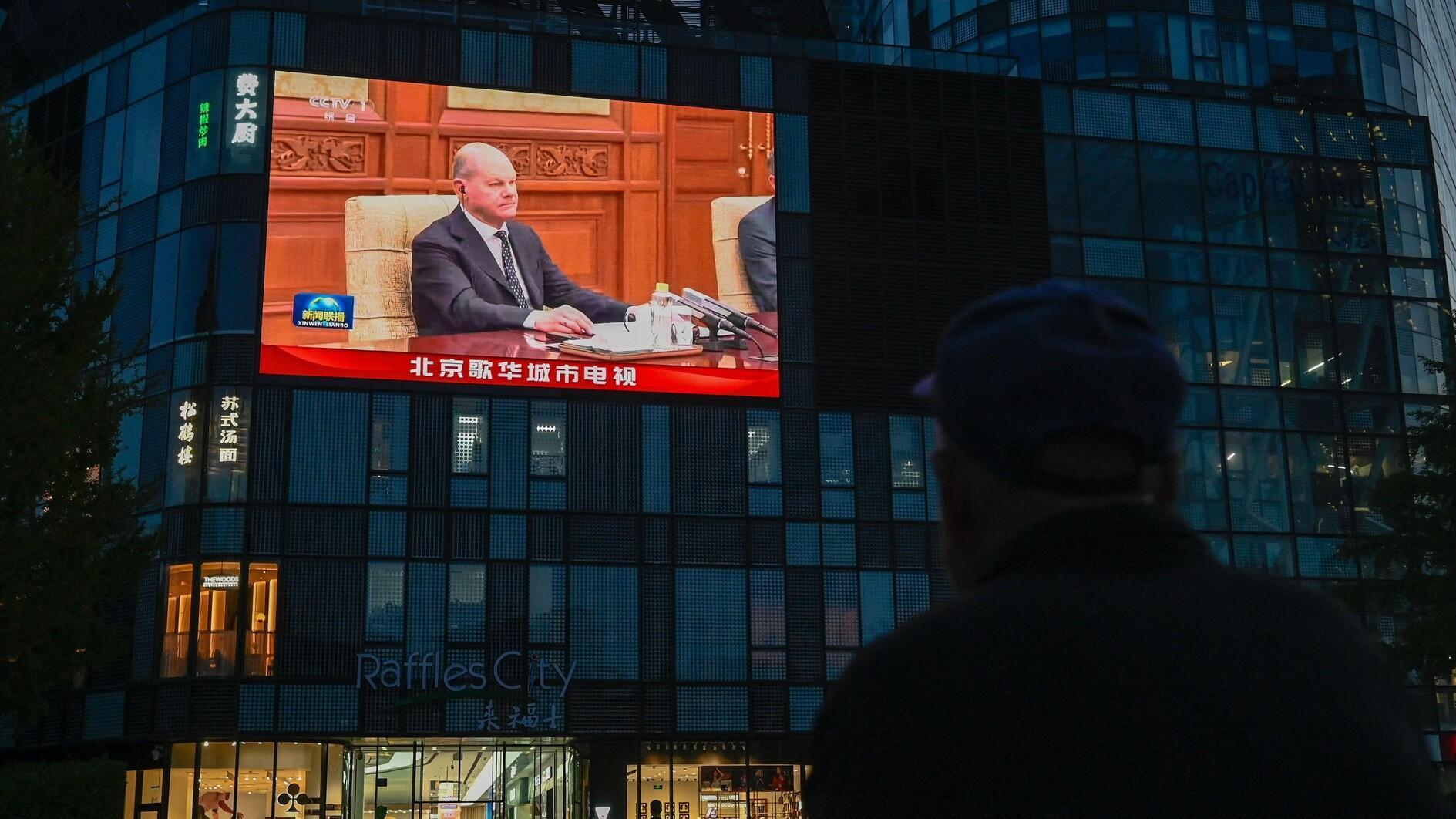Hasankeyf among most endangered heritage sites
ISTANBUL

Hasankeyf and its surroundings is on the shortlist of 14 endangered landmarks from Europe. The final seven will be announced in March 2016.
Europa Nostra, the leading European heritage organization, and the European Investment Bank Institute announced on Dec 10 the 14 monuments and sites shortlisted for “The Seven Most Endangered” program 2016 by an international panel of experts in various fields.The ancient city of Hasankeyf from Turkey and its surroundings was among those heritage sites. The other endangered landmarks from 14 European countries included:
The Archaeological site of Ererouyk and village of Ani Pemza, Armenia; the Palace of Justice in Brussels, Belgium; the Patarei Sea Fortress in Tallinn, Estonia; the Helsinki-Malmi Airport, Finland; the Colbert Swing Bridge in Dieppe, France; the Castle in Divitz, Germany; Kampos of Chios, Greece; the Venice Lagoon, Italy; Castle Rijswijk, the Netherlands; Y-block in Oslo, Norway; the Valflores Palace and Estate, near Lisbon, Portugal; the Convent of St. Anthony of Padua, Extremadura, Spain; and Mavisbank House, near Edinburgh, the United Kingdom.


Final list in March
Some of these sites are in danger due to neglect or inadequate planning/development, others due to a lack of resources or expertise. The final list of seven sites will be unveiled at a public event in Venice on March 16, 2016. The 14 shortlisted monuments and sites were selected taking into account their outstanding heritage and cultural values as well as the grave danger that they are facing.
The commitment of various public and private stakeholders and the engagement of the local communities to rescuing those sites were also considered essential. Another important criterion was the potential of these sites to serve as a resource and a driver of sustainable development for the wider region in which they are located.
The sites were shortlisted to 14 by a panel of experts in History, Archaeology, Architecture, Conservation, Project Analysis and Finance. The final list of seven sites will be selected by the Board of Europa Nostra. The program was launched in January 2013 by Europa Nostra with the European Investment Bank Institute as founding partner and the Council of Europe Development Bank as associate partner.
The 12,000-year-old settlement of Hasankeyf is located on the banks of the Tigris River in southeastern Turkey. From Neolithic caves to Roman ruins and medieval monuments, Hasankeyf is a living museum of epic proportions.
Despite its exceptionally rich multicultural history and heritage, 80 percent of Hasankeyf will be flooded if the Ilısu hydroelectric dam project is implemented as planned.
There is no internationally recognized scheme for the relocation and preservation of the monuments. The most urgent actions required are to alter the Ilısu Dam project and to formulate an independent strategic plan that balances conservation and sustainable development.
The controversial Ilısu Dam has been discussed for years. Plans for the dam were first laid out in a regional development plan defined in the 1980s, under a broader development plan known as the Southeastern Anatolia Project (GAP). However, the initial project was drafted back in 1954 by the Directory of Water Affairs.
Set to become the fourth hydroelectric power plant if completed, the construction of the Ilısu Dam began in 2010 after years of debates, amid controversy over its ecological and cultural impact.
The government, and others who defend the project, argue that the historic heritage will be moved from the area and not be destroyed.

Nominated by Cultural Awareness Foundation
The ancient city was nominated for “The Seven Most Endangered” 2016 program by the Cultural Awareness Foundation, whose campaign is supported by a range of national and international bodies.
The goal of the campaign is to contribute to a dialogue about heritage conservation by outlining a model for balancing conservation and development. This model is to be based on a case study examining the example of Hasankeyf. This study presents an opportunity to share knowledge and build consensus concerning heritage conservation and economic growth.
If Hasankeyf is designated as one of those seven sites, heritage and financial experts from Europa Nostra and the European Investment Bank Institute, will assess the site and, taking into consideration the investments that have already been made in the area’s development, help formulate a feasible action plan to conserve Hasankeyf and its invaluable universal heritage.
















